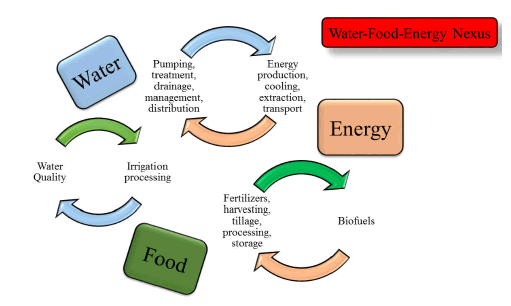Yin Min Htun, Hiroyuki Nakagawa and Masayo Kushiro
Using a multifunctional column which consists of lipophilic and charged active sites, a simple extraction and purification method with quick and accurate analysis of aflatoxins (B1, B2, G1 and G2) from sugarcane bagasse was developed by spike and recovery tests. After extraction with a mixture of acetonitrile and water (9+1, v/v) followed by clean-up method through MultiSep #226 multifunctional column (MFC), aflatoxins were detected via high-performance liquid chromatography with fluorescence (HPLC-FL) analysis. Recovery rates of each aflatoxin B1, B2, G1 and G2 spiked to the bagasse at different levels were 81.5 ± 3.3%, 87.5 ± 0.7%, 80.2 ± 4.3% and 86.4 ± 4.5% in samples spiked with 5 ng AF mix/g, and 83.1 ± 1.2%, 89.4 ± 2.0%, 81.0 ± 4.3% and 87.2 ± 2.1% in samples spiked with 10 ng/g, respectively. It is concluded that this proposed method is applicable for the practical determination of aflatoxins contamination in bagasse.
Nur Azalina Suzianti Feisal, Zailina Hashim, Juliana Jalaludin, Vivien How, Jamal Hisham Hashim, Wan Nurul Farah Wan Azmi, Zurahanim Fasha Anual and Rafiza Shaharudin
Heavy metals are non-biodegradable pollutants in environment that can enter our bodies through different routes and accumulated in the body. Hair analysis is increasing in studies due to the advantage of results of any homeostatic mechanisms unlike blood sample. The aim of this was to develop an analytical method to determine the concentration of nickel (Ni), arsenic (As), cadmium (Cd) and lead (Pb) in hair sample by Inductively Coupled Plasma Mass Spectrometry (ICP-MS). The analysis was performed using ICP-MS ELAN 9000 (Perkin Elmer) that equipped with a Meinhard Concentric Quartz Nebulizer, Cyclonic Spray Chamber, Nickel Sampler and Skimmer Cones. The validation of each element was done using human hair Certified Reference Material (CRM), USA. Spike recovery of these elements was done by using CRM and the values were within 85% to 115% for validation. The linear calibration curves were established using concentration of 5, 10, 20, 50, 70 and 100 ppb of each element with good linearity (r2>0.999). The lowest limits of detection for Ni, As, Cd and Pb were 61.18 μg/g, 2.34 μg/g, 6.15 μg/g and 112.95 μg/g. The results prove that ICP-MS can provide better sensitivity and detection limit can be achieved down to 2.34 μg/g. This approach offers the advantages of simplicity and ease of use as no pre-analytical steps such as digestion or excretion. In conclusion, ICP-MS can offer the capability to performed sub part per billion levels of multi-elements measurement. Hence this study demonstrated that ICP-MS can be effectively used for determination of heavy metal in human hair.
Ahmed Al-Rashed and Hossam Mostgab
The environment of Kuwait had a massive distraction by the Iraqi tropes in 1990. Oil wells had large damages in the Burgan area created huge amount of spill on Soil surface and sub surface. Almost thirty years since the deduction of 734 oil wells in Kuwait. the majority of the land in the oil production in the country effected by contamination in the desert environment. This paper present description and result of site soil characterization activities carried over five (5) well heads in the Burgan field, which were further contaminated beyond 5 m depth. Site characterization study had used to determine the depth of oil and to estimate the level of contamination on these wells, and which layers of the soil in the selected five well heads have more spill, to proceed with remediation procedures using selected fertilizers (nutrients).
Sajid Mehmood, Muhammad Rizwan, Saqib Bashir, Gutha Yuvaraja, Sana Ur Rehman, Waqas Ahmed, Muhammad Imtiaz and Di-Yun Chen
With the possibility of the Water-Energy-Food (WEF) Nexus since a long time back, overlooked interlinkages between WEF are getting the chance to be indisputable. Nonetheless, agriculture is responsible for quite a bit of fresh water over-use. Food production further effects the water and energy sectors through degradation of land, changes in overflow, disturbance of groundwater release, water quality, accessibility of water and land for different purposes. The responsibilities of this unparalleled issue include particular parts of the organization around the Nexus. While a couple of papers try to conceptualize the Nexus-Governance, this phenomenal report gives a rich combination of work for further WEF-Nexus ponders and integrative methodologies.

Zhan M, Wang H, Hao R and Li Y
Hexabromocyclododecane (HBCD) has gained comprehensive attention in the recent decades because of their persistent, bioaccumulative, and toxic characteristics. In order to identify existing problems in the fate and effects of HBCD on environment and human health, special attention is given to the numerous advances in the methods of analysis, toxicological effects, migration, transformation, and degradation of HBCD and its by-products, as well as distribution of HBCD in the environment and human bodies. Beside the studies of toxicity and distribution, the analysis method of HBCD did not get enough attention and the studies and reviews which related to the analysis method were very few. However, the analysis of HBCD is a continuing challenge mainly because of the limited concentrations in the environment and the large amounts of interfering substances during the measurement. The mistakes during the analysis procedure will seriously affect the study on HBCDs. According, this review paper mainly focuses on the studies of HBCD in recent years and summarizes the sample pretreatment, including sample collection, extraction, concentration and fractionation, and the instrumental analysis of HBCD.